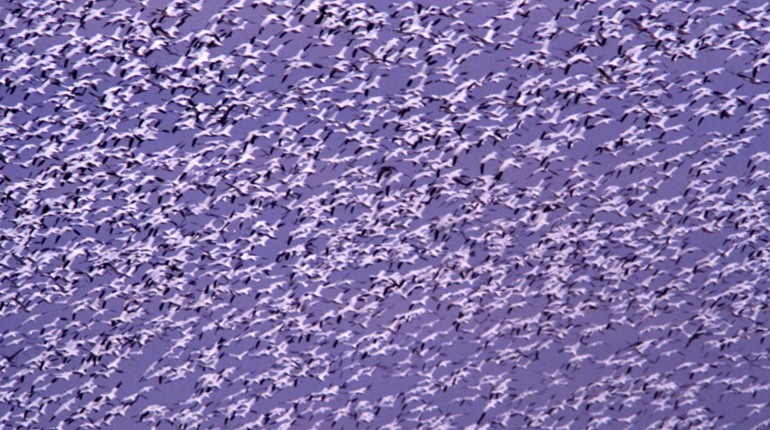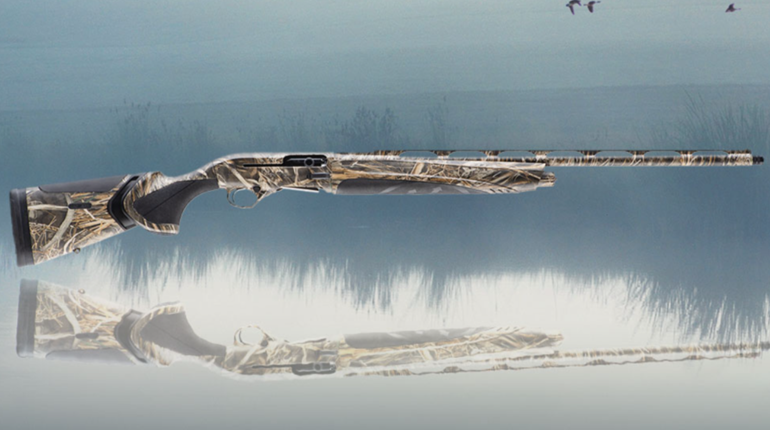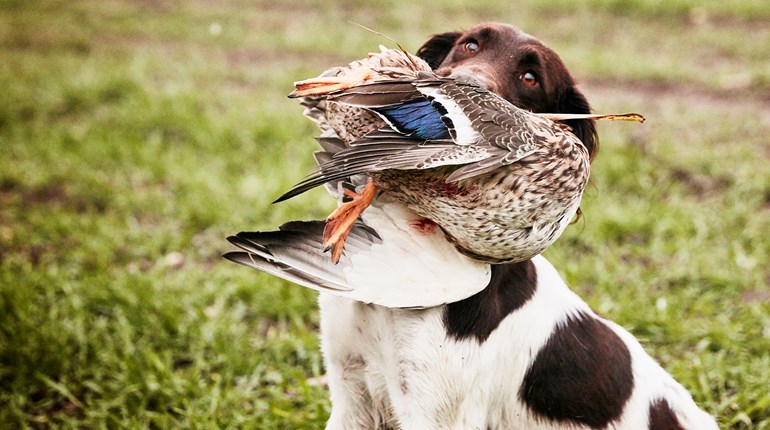Upland and waterfowl seasons are open but a fraction of the year—so, what do you do with your faithful gundog during the 9 or 10 months when you aren’t hunting? A dog bred to hunt ought to hunt, of course, but he doesn’t necessarily need to fetch birds to be happy. He does, however, need a job.
Fortunately there are plenty of outdoor pursuits that any dog bred to hunt birds can easily be trained for. They extend the season; give your dog new, fun activities to learn and enjoy; and may even make you a better-bonded, more cooperative team when it comes to bird hunting. Here are a few examples.
Shed Hunting
Shed hunting has long been a way for hunters (and non-hunters) to shake off the winter doldrums and collect a few antlers. Increasingly it’s a hobby in which dogs take part—there’s even a North American Shed Hunting Dog Association. Dogs can cover a lot more ground than a human, they can actually smell the antlers and, well, as with most things in life it’s just more fun with a dog.
Arguably there’s no better shed-collecting dog than one with strong upland skills. Namely because a dog that covers a field effectively will leave neither birds nor antlers undiscovered. If your dog runs a nice pattern, he’s already a big step ahead of the game. Essentially all that’s left to do is teach the dog to find, pick up and retrieve antlers just as he would a bird. Compared to training for blind retrieves, steadying or other polishments, the process is fairly simple.
The first step is to get the dog excited about antlers, especially their scent. You can rub a ball or dummy on an antler and toss retrieves, or encourage your dog to pick up an antler in the house or yard while laying on the praise. The key thing is the dog must learn that grabbing the antler pleases you—and therefore him.
Next you can plant antlers in the house or yard in relatively plain view. When the dog picks up the antler, encourage him to bring it to you and lay on the praise or reward the dog with a treat. As the dog progresses, you’re ready for the next step: Take your dog to a field or wooded area and, while he remains in the truck out of view, hide a few antlers. Then quarter him through the field just as though you were hunting—rookie shed-dog trainers often note their surprise that their dogs picked up the sheds on the first try. If the dog doesn’t get it right during the initial exercise, take a step back in training. Soon you’ll be ready for real thing and have a new, fun avenue to enjoy with your dog each spring.
Blood-Trailing Deer
Deer season can be a boring time to be a bird dog, so why not incorporate them when possible? Especially when it could save you the great heartache of losing a wounded animal. I write, of course, of training your dog to blood-trail deer. Be sure to check regulations in your area, because the practice is still illegal in some states. However, many game agencies are starting to see its merits: According to BloodTrailDogs.com, in 2010 an additional 12 states began allowing it. Personally I believe it’s more unethical not to allow dogs to help recover wounded game. Isn’t’ recovery of a wounded animal—regardless of tactics—most important? Certainly dogs are more equipped to sniff out the deer’s path than a human with a flashlight.
Traditionally all sorts of terriers and hounds including beagles have been used, but increasingly sporting breeds—especially Labradors—are employed. Any dog with a nose for game can be taught, though.
Begin by collecting some fresh deer blood and placing it on a sponge. Allow your dog to smell it—praise him and reward his interest with a treat. Once his interest in the scent is established, set up an easy trail for him to follow. Using the blood-soaked sponge, dot a 5 to 10 yard blood trail in your yard for the dog to follow—without allowing him to see you, of course. At the end of the trail, place a chunk of deer hide. Then walk the dog on a lead or check cord, allowing him to sniff the trail. If he loses interest, wait for him to resume sniffing the ground. Once you reach the hide, lay on the praise, optionally provide a treat and allow the dog to hold or even gently chew the hide.
As the dog becomes proficient, increase the challenge by allowing the blood trail to sit longer, thereby decreasing the scent. Gradually increase the distance—20, 30, 40, even 50 yards—and add irregular directional changes (a wounded deer doesn’t run a straight line). If the dog struggles, guide him in the right path to keep his confidence high. Eventually you can also lose the leash (though some states require blood-tracking dogs to be leashed at all times) and allow him to hunt freely. After all, unlike hounds, bird dogs prefer a less linear approach to following and staying on scent trails.
He’s now ready to assist you in recovering deer.
Turkey Dogs
Hunting fall turkeys with dogs is nothing new. In fact, it is among the tasks for which the Boykin spaniel was originally bred in South Carolina. Some even say the Boykin’s chocolate coat was designed to help it hide in the shadows from the wild turkey’s wary eyes.
However, where legal,any dog can be taught to pursue fall turkeys, when the key to (possibly) killing a gobbler includes breaking up the flock and luring them in with a “key-key” locator call. The dog simply needs two important characteristics: A high level of obedience and a patient, calm demeanor.
It’s easiest to teach a dog to hunt turkeys if you begin young. Many advise attaching a few turkey feathers to a line at the end of a fishing rod. Strong prey drive is achieved by dragging the feathers along and allowing the pup to chase and jump after them. Occasionally the pup can be allowed to catch them.
Now, back to obedience. Spending time in the woods over the summer is of the utmost importance. Go for a hike and, after your dog has run off some steam, plop down and have the dog calmly sit with you for an extended period of time. He’ll need this skill come fall, when a gobbler is on the line. After the first few sessions, add a turkey call to ensure the dog remains calmly sitting with this added distraction. You can also teach the dog to sit in a small blind, such as those used for waterfowl hunting. This familiar item may help keep the dog calm as well as concealed. Dogs like having a “place.”
There’s really no way to train the dog for the next step—finding and scattering a flock—in an artificial setting. You just have to get out there and hunt. Eventually you will learn from your dog’s demeanor whether he’s actually pursuing turkeys or a different undesired game. This will be the biggest struggle of the upland dog, as he’ll want to chase rabbits, grouse and more. You will have to call him off these types of game, which is easier said than done. Again, obedience is crucial to a good turkey dog.
Eventually with any luck the dog will scent a flock, pursue it and flush the birds. He then must be called back to you, so ensure the “come” command is highly established. The beauty of using a dog is they tend to thoroughly scatter the birds, as turkeys that stay together have no incentive to meet back up at the area of the flush.
So, not only do these fall and spring pursuits lend a few fun activities to your dog’s yearly agenda, but they must be added to his training regimen. For practical purposes, that means his summer months just got a whole lot busier. But don’t worry, to a bird dog a full slate is a very good thing.





































